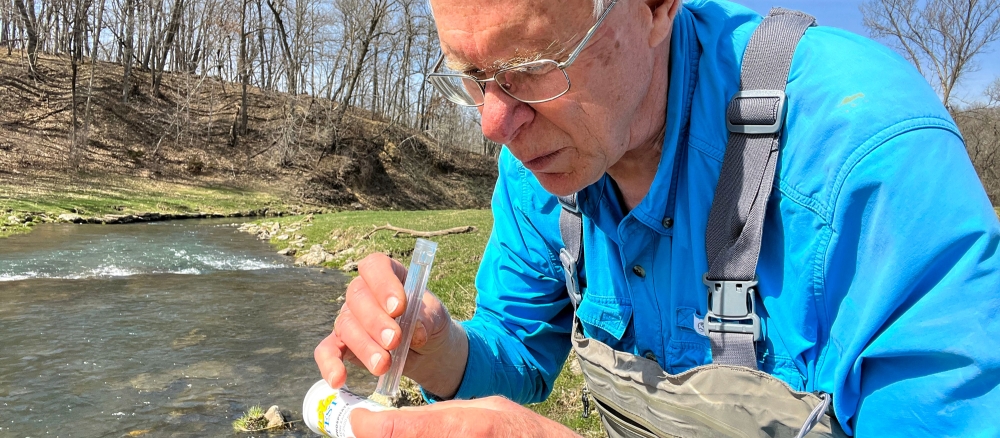Near the beginning of his journalism career, John Weiss was assigned to cover the karst topography of southern Minnesota. To enhance his journalistic take, Weiss’s editor suggested he sign up to be a stream monitor.
As a naturally curious writer and outdoorsman, Weiss gladly accepted the assignment and started a stint as a volunteer water monitor measuring water clarity of the Zumbro River that has lasted for more than 20 years.
“I started doing it for the assignment, and it just got to be so much fun, I just kept doing it,” Weiss says.
His story soon transformed into a series about the water in southern Minnesota and even led to legislation that helped protect and clean up the water in the karst region.
Living his whole life in Minnesota close to a stream or a lake led to Weiss’s strong connection with moving water and a sense of curiosity toward it.
He’s the type to wade into a stream and pick up a rock to investigate what is living underneath or come across a body of water and wonder if he could paddle his canoe or spend a day fishing on it.
Some could say his curiosity can’t be contained. Weiss now volunteers for a total of six water monitoring programs throughout the state.
“You think about water in a very different way once you become a monitor,” Weiss says.
Weiss has seen the water he monitors change year after year. Sometimes nitrate levels go up and down and sometimes flooding has given him a Secchi tube transparency reading of zero.
What he has pieced together from his years of collecting samples is that the water, and the creatures living in the water, are a great indicator of what is happening on the land around him.
“I think about it like a blood sample at the doctor,” Weiss says. “It’s an indicator of health and what is going into the body.”
Weiss wants to instill curiosity and appreciation for the water in the hope that others will take care of Minnesota’s resources.
These days he loves to go outside with his 7-year-old granddaughter to take water samples.
“She knows how to do it and I watch her,” Weiss says. “She gets a big kick out of it. It’s a great thing to share with your family.”
